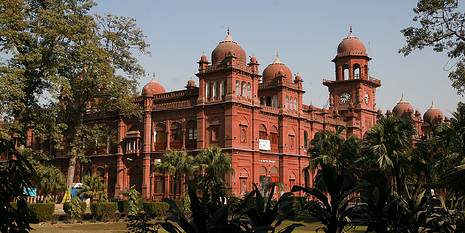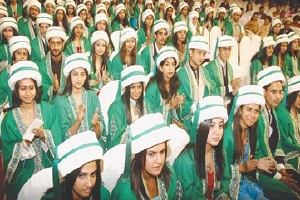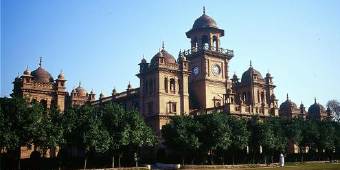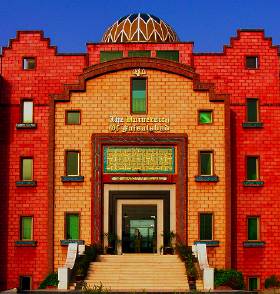Junaid Siddiqui
Last year at ATP, there was a post on the HEC (Higher Education Commission)’s Ranking of Pakistani Universities. That single post generated so much interest that in the past one year it has got 30000 hits on it. It not only shows the immense interest among prospective university students but also shows lack of career counseling or guidance available to them.

I have written this article in a hope of building further on HEC’s rankings as well as to show that Pakistani universities have very far to go to make up to any internationally recognized University Ranking.
 Spanish National Research Council biannually publishes Webometrics Ranking of World Universities. The raking is based on data obtained from popular search engines. Universities for this purpose are identified based on their institutional web domains. The methodology of ranking is based on the following quantitative indicators:
Spanish National Research Council biannually publishes Webometrics Ranking of World Universities. The raking is based on data obtained from popular search engines. Universities for this purpose are identified based on their institutional web domains. The methodology of ranking is based on the following quantitative indicators:
Size (S). Number of pages from a university’s domain recovered from search engines.
Visibility (V). The total number of unique external links received (inlinks) by a university’s site.
Rich Files (R). Number of rich files available on a university’s domain recovered from search engines. The file types considered include Adobe Acrobat (.pdf), PostScript (.ps), Microsoft Word (.doc) and Microsoft Powerpoint (.ppt). This is considered as it is relevant to academic and publication activities of a university.
Scholar (Sc). Number of papers and citations for a university’s domain available on Google Scholar.
Following formula is used to rank universities:
Webometrics Rank (position)= 4*RankV+2*RankS+1*RankR+1*RankSc
 The ranking criteria is quantitative is nature for which data can be easily obtained through some simple search engine queries. What is, however, interesting to note about the ranking results (last published in July 2007) is that they compare rather well with other world rankings of universities such as the Shanghai Jiao Tong University ranking or The Times World University Rankings.
The ranking criteria is quantitative is nature for which data can be easily obtained through some simple search engine queries. What is, however, interesting to note about the ranking results (last published in July 2007) is that they compare rather well with other world rankings of universities such as the Shanghai Jiao Tong University ranking or The Times World University Rankings.
SESRTCIC, a research center of OIC, has recently released a preliminary Academic Ranking of Universities in the OIC Countries, which is based on the research output data of the universities of OIC member states. Most of the top ranking Middle Eastern universities in the composite index of OIC ranking are also among the top Middle Eastern universities in the Webometrics ranking. The Webometrics ranking, therefore, seems to be a good indicator of global standing of a university.
Given that Webometrics ranking is based on quantitative parameters we can expect that a populous country like Pakistan should have at least few of its universities, let us say, in the top 2000. However when we look at the Webometrics ranking of Pakistani universities, it is disappointing to see that there are no universities in even top 3000 and there are only two universities in top 4000 rankings. They are Lahore University of Management Sciences (rank 3071), Aga Khan University, Karachi (rank 3422) and the Punjab University, Lahore (rank 4685).
 Universities form the centers of intellectual and scholarly activities in any country and the Webometrics ranking of our universities is an indicator of the dismal situation we have in our country. Interestingly the two universities in top 4000 (LUMS and AKU) are the same universities that Dr. Pervez Hoodbhoy identified as the two Pakistani universities closest to the universities located in free societies across the world.
Universities form the centers of intellectual and scholarly activities in any country and the Webometrics ranking of our universities is an indicator of the dismal situation we have in our country. Interestingly the two universities in top 4000 (LUMS and AKU) are the same universities that Dr. Pervez Hoodbhoy identified as the two Pakistani universities closest to the universities located in free societies across the world.
Independent thought is the foundation that allows intellectual activities to flourish which seems to be missing from the fabric of most of our higher education institutions. The recent article on BBCUrdu.com about the kind of thoughts promoted at our long established Karachi University is one example of what is happening at our universities.
Whether it be the education in the disciplines of natural sciences or social sciences the situation is the same. When we go into the classrooms what we find is an environment that restricts the thinking of our students than opening it up. This is yet another aspect of our society which needs immediate and radical measures.
About the Author: Junaid Siddiqui is a Civil Engineering graduate of NED University Karachi and now a lecturer at King Fahad University of Petroleum and Minerals.




















































“May Allah we have such genius and sincears Educationist Pakistanis who willingly and agressivly change the education system of your beloved country”
Why blame our current situation on Allah? We have this ridiculous habit of saying Inshallah every now and then. We are insulting Allah when we say – may allah give give genius Educationists to Pakistan. Allah has already given us many brilliant men and women out there. It is our education system that we are not able to nurture them and make them torch bearers.
I read out your artical, this gave me lot of information, and I have some more painful facts, In Pakistan, one teacher is avaliable per 38 students. while Iran had 1 teacher per 10 students. USA has 14 students per teacher. So we need to get focus on it. we need tu built more school and trained teachers to get respectabale ranking position in the world. May Allah we have such genius and sincears Educationist Pakistanis who willingly and agressivly change the education system of your beloved country.
Thanks for an interesting article but I think what you have mentioned about a recent note on BBCUrdy.com about Karachi university’s journal is another example of intolerance and prejudice. I don
Very interesting comparision of web activity on LUMS and ATP website. It highlights the fact of “community” involvement. A blog or a discussion forum may also help in sharing and expression of thoughts by students, a basic ingredient of modern education that is missing from our education system.
Few months back I made comments about wastage of research resources at LEG at KMB . One can read here.
Clickety
Since we are talking about KU. Does anyone have any idea about the wastage of money in recently developed Latif Ebrahim Jamal Institute for Science and IT? The section has free Internet and students have been provided facility to attend lectures from different universities around the world but instead of attending lectures which cost $200/lecture, students are rather busy in using Internet for usual stuff, emailing etc. Noone or very few attend lectures and regardless of someone attend or not, Govt is bound to pay lecture fee to concerned universities. What a Shame!